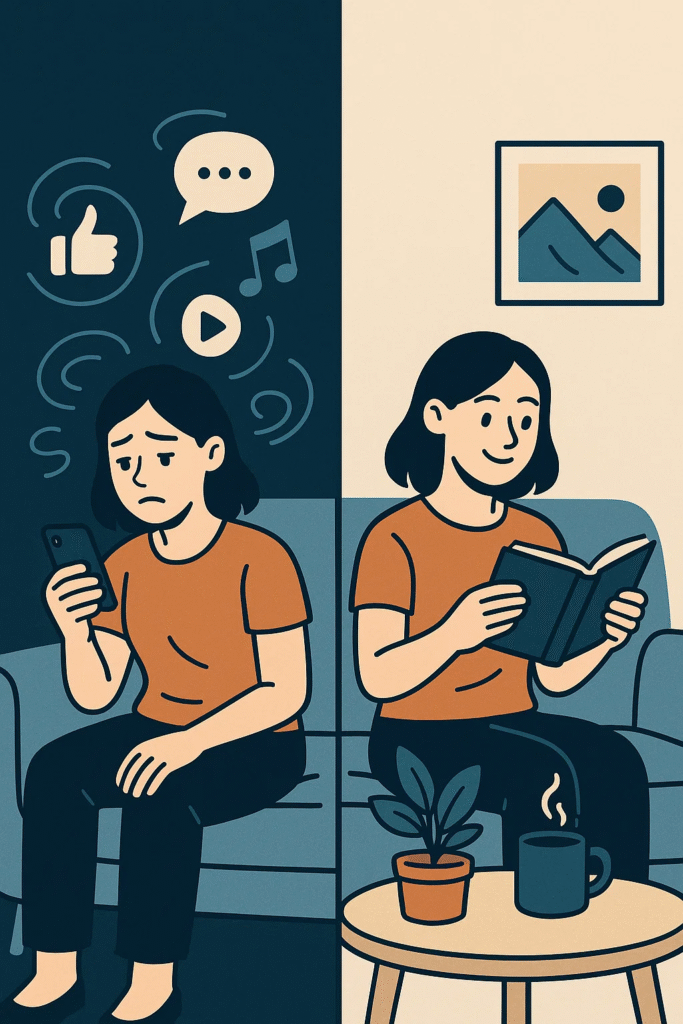
As technology continues to evolve, our lives are more connected to digital devices than ever before. Smartphones, laptops, and social media platforms shape how we work, learn, and interact. While these tools offer countless benefits, they also bring risks such as distraction, burnout, and information overload. Building healthy digital habits in 2025 is essential for maintaining balance, productivity, and mental well-being.
1. Set Clear Boundaries for Screen Time
It’s easy to spend hours scrolling without realizing how much time has passed. Research from the American Psychological Association shows that excessive screen use is linked to increased stress and reduced attention spans.
Practical steps include:
- Defining specific “no screen” hours, especially before bedtime.
- Using apps to monitor and limit time on social media.
- Prioritizing face-to-face interactions whenever possible.
Creating boundaries ensures that technology enhances life instead of dominating it.
2. Practice Digital Mindfulness
Mindfulness isn’t only for meditation. It applies to technology use, too. Instead of passively consuming endless content, focus on what truly benefits your goals and well-being.
Simple ways to practice digital mindfulness:
- Turn off unnecessary notifications.
- Follow accounts that inspire or educate.
- Regularly review and unfollow sources that trigger stress.
According to Mayo Clinic, mindful use of technology can reduce anxiety and improve overall health.
3. Protect Your Personal Data
In a world of increasing cyber threats, protecting your personal information is as important as protecting your physical health. Use strong passwords, enable two-factor authentication, and be cautious about the data you share online.
For managing digital media securely, platforms like Floader.net can help store and organize videos for personal use. By keeping your content safe and accessible, you avoid relying on unstable third-party services that might compromise privacy.
4. Balance Productivity and Rest
The pressure to be “always online” can lead to burnout. Healthy digital habits include scheduling time for deep work while also allowing space for rest. Productivity experts emphasize that strategic breaks and digital detox periods actually boost long-term performance.
Some strategies include:
- Using time-blocking techniques to separate work and leisure.
- Taking short walks away from screens every couple of hours.
- Scheduling entire “offline days” to recharge.
5. Embrace Lifelong Digital Learning
Technology changes rapidly, and staying updated requires continuous learning. Whether it’s exploring new software, keeping up with cybersecurity best practices, or developing creative digital skills, lifelong learning helps you adapt to future challenges.
Online courses, webinars, and workshops offer opportunities to stay ahead without overwhelming your schedule. By choosing intentional learning over passive scrolling, you ensure that your screen time remains valuable.
Conclusion
In 2025, healthy digital habits will be the foundation of a balanced and productive life. Setting boundaries, practicing mindfulness, protecting data, and balancing productivity with rest are all essential steps.
By incorporating convenient tools and following expert advice, you can make technology work for you, not against you.
Building intentional digital routines ensures that devices remain tools for empowerment, creativity, and well-being in the year ahead.